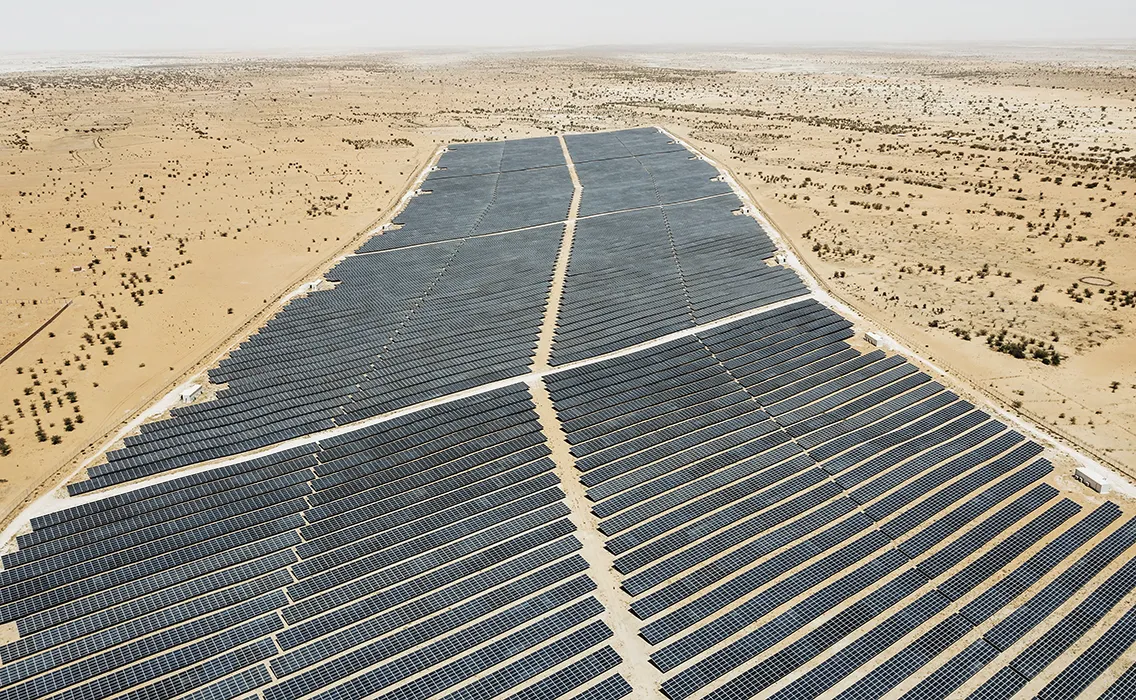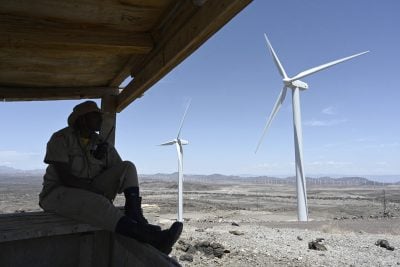This article was produced with the support of Ministry of Energy and Petroleum of the Islamic Republic of Mauritania
From an expanding mining sector to the potential of green hydrogen and natural gas, Mauritania’s ambitions require a robust energy infrastructure to support these growing industries. At the heart of this vision is a shift in how Mauritania powers its mining sector, which has long relied on conventional energy sources. “Traditionally, the mining sector here managed its own energy needs. It wasn’t a central issue for us, so they operated independently,” says Mamadou Amadou Kane, special advisor to the Minister of Energy Transformation and Gas to Power. “But now, we’re bringing in some important changes. For the first time, Mauritania will use independent power producers (IPPs), which represents a significant shift for us.”
The Société Nationale Industrielle et Minière (SNIM), Mauritania’s state-owned mining giant, is central to this transition. A major player in the global iron ore market, SNIM has traditionally relied on diesel generators for power. However, a 30 MW thermal power plant under construction in Zouérat, costing €55m euros, will soon bolster SNIM’s capacity.
This plant is one of several initiatives aimed at meeting the growing energy demands of the mining sector. The Tasiast gold mine, operated by Kinross Gold Corporation, is also exploring solar options to supplement its energy needs, though renewable integration remains in the early phases.
Mining remains energy-intensive, and for Mauritania’s ambitious production targets, reliable and sustainable power is essential. SNIM, which produced over 13m tons of iron ore in 2022, aims to nearly double output by 2030. This growth hinges on a dependable energy supply, not only for SNIM but also for other companies poised to join the sector.
Mauritania’s rich solar and wind potential positions it well for renewable energy projects. Though primarily aimed at enhancing the national grid, these projects could indirectly benefit mining operations by freeing up traditional power resources for industrial use. Major initiatives like the Desert-to-Power project are helping to expand the national grid with renewable energy, and the recent $46.9m African Development Bank (AfDB) investment to widen Nouadhibou’s port access deepens its commitment to Mauritania’s sustainable energy goals.
Mauritania’s aspirations go beyond conventional energy solutions, as the country seeks to establish itself as a green hydrogen hub. Projects like Chariot and TotalEnergies’ Project Nour aim to produce green hydrogen for export and potential domestic use, marking Mauritania as a key player in the clean energy landscape. The government envisions a synergy between green hydrogen, mining, and natural gas projects, which could fuel the production of green steel – a major step-up in the value chain.
“As global steel production shifts towards cleaner methods, Mauritania is poised to capitalise on the demand for high-quality iron ore and direct reduced iron (DRI) pellets,” explains Kane. This ambition relies on creating a reliable, interconnected power backbone that supports green hydrogen development while enabling mining operations to reduce their carbon footprint.
Mauritania’s progress in electrifying the mining sector and expanding grid access comes with its share of challenges. Infrastructure limitations, particularly in transportation and energy distribution, remain a hurdle. SNIM’s railway link to the port of Nouadhibou is essential for transporting iron ore, but the port’s limited access can only accommodate a fraction of the global bulk carrier fleet. This constraint drives up shipping costs and restricts Mauritania’s ability to scale its exports.
Moreover, the country’s harsh desert environment poses operational difficulties, with extreme temperatures, sandstorms, and scarce water resources complicating both mining and power infrastructure.
Regulatory requirements add another layer of complexity. While Mauritania’s Mining Code sets a clear framework, frequent amendments and bureaucratic inefficiencies can slow project approvals. “We’ve developed a power master plan, introduced in December 2022, which lays out a clear roadmap to support the mining sector,” says Kane. “This reorganisation allows private companies to tap into the national grid more reliably.”
Mauritania’s ambitions for energy expansion extend beyond mining, with a target of universal electricity access by 2030. Currently, rural electrification stands between 6% and 10%, and half the country will require grid extensions while the rest relies on off-grid solutions. Through initiatives like Masdar’s rural electrification programme, solar power plants now operate in remote communities, providing reliable electricity to over 39,000 homes and reducing reliance on diesel.
The government’s broader electrification plan includes financing agreements with the AfDB for two major energy projects. One project, the 225 kV Mauritania-Mali interconnection, will support solar power expansion and connect the national grid to Mali, enhancing regional energy security. The second project, funded by a $16m grant, will create 40 hybrid mini-grids across southeastern Mauritania, supporting local industries, especially in agri-food processing and storage.
Mauritania’s stability within the Sahel, a region marked once more by insecurity and coups, has been critical for attracting long-term foreign investment. However, the country’s reliance on mining exposes it to the volatility of global commodity markets, making economic diversification essential. The government’s commitment to reinvesting mining revenues into social sectors and critical infrastructure provides a pathway toward sustainable, inclusive growth.
With strategic investments and a vision for renewable energy, Mauritania is poised to harness its natural wealth to power a prosperous future. If guided by prudent governance and a commitment to environmental sustainability, the nation’s mining and energy sectors could unlock opportunities for generations to come.

 Sign in with Google
Sign in with Google 




